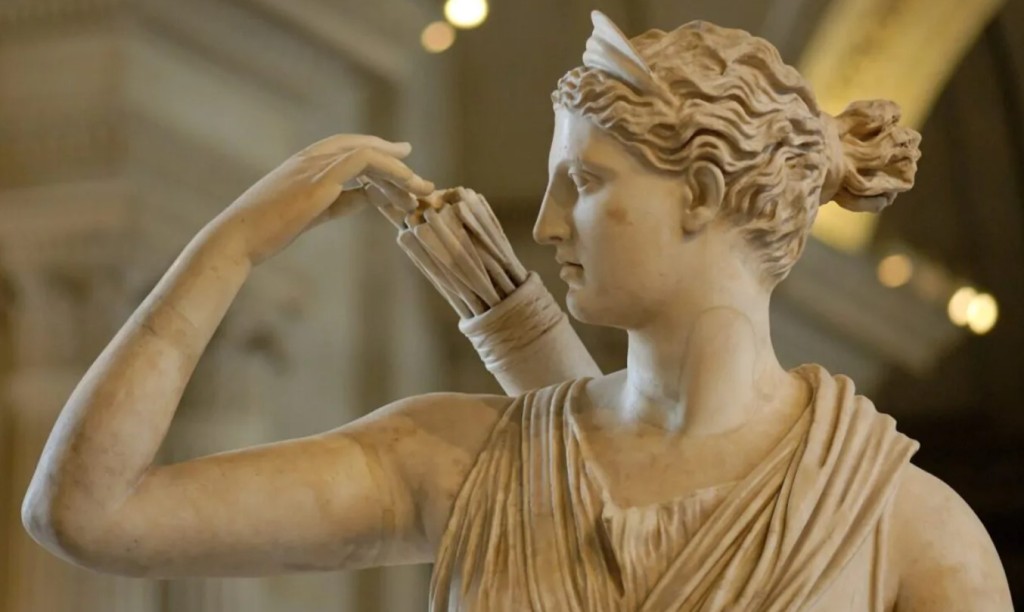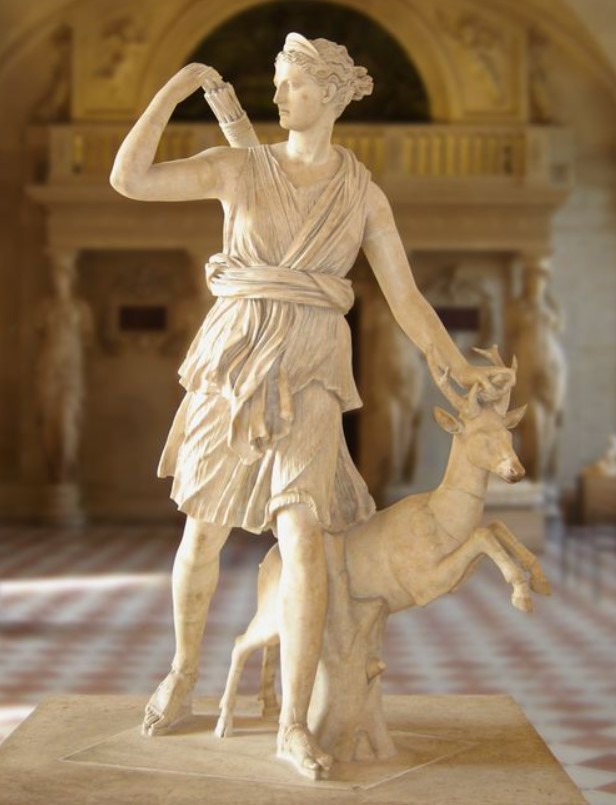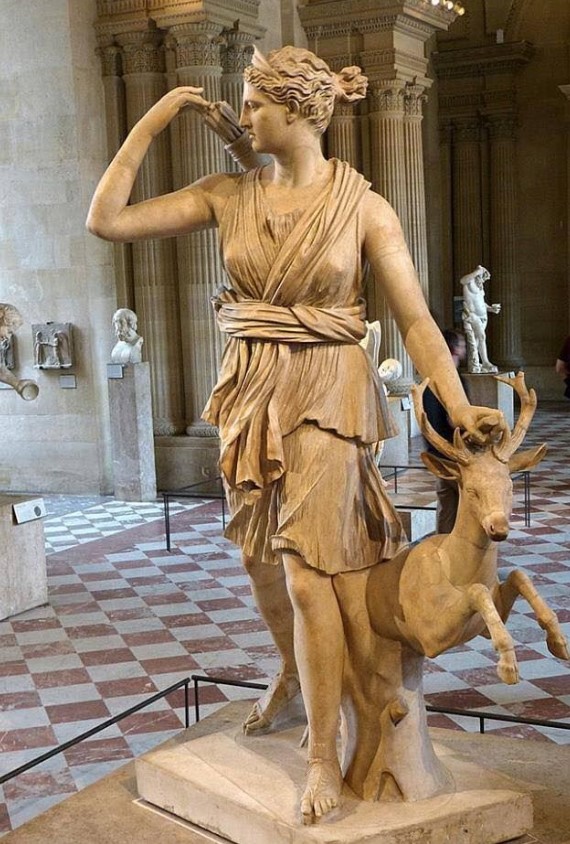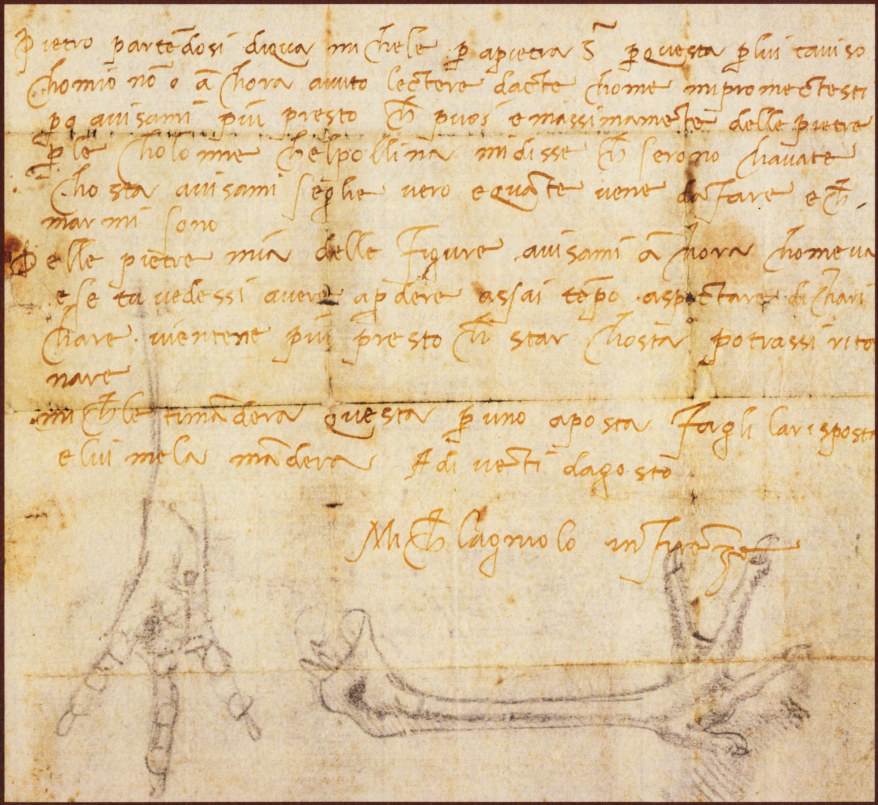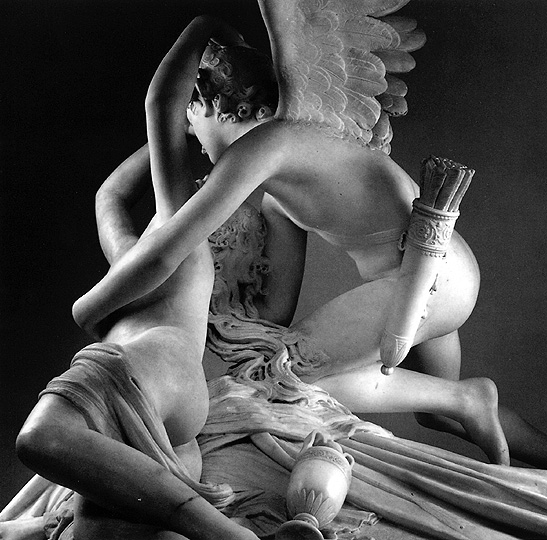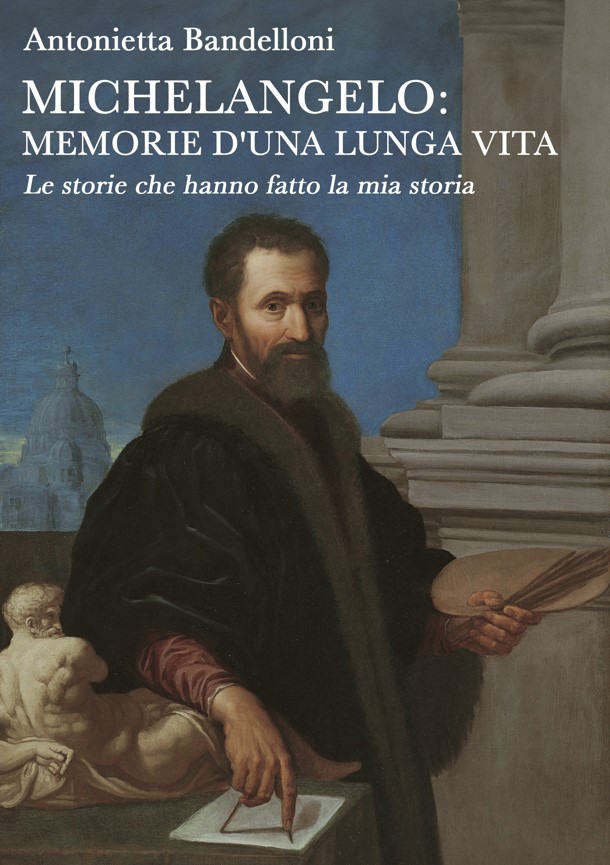La Diana di Versailles: trovata in Italia e finita al Louvre… e Napoleone non c’entra
La scultura del giorno che vi propongo oggi è la cosiddetta Diana di Versailles, conosciuta anche come Artemide della Caccia.
Artemide, nota come Diana nella mitologia romana, era la dea greca della caccia, della natura selvaggia e della castità. Figliola di Zeus e sorella di Apollo, era la protettrice delle ragazze e delle giovani donne, presiedeva alle nascite ed era particolarmente venerata. Proprio come accade in questo capolavoro esposto al Louvre, viene raffigurata sempre come una cacciatrice dalla figura snella e mascolina.
La raffigurazione più celebre di Diana è senza dubbio quella di cui vi parlo oggi, una scultura realizzata in marmo su un originale greco in bronzo risalente al IV secolo a.C.
L’opera in marmo è del II secolo a.C. e prima di essere collocata nel Louvre, si trovava nella sala degli Specchi del Castello di Versailles: ecco perchè è nota come Diana di Versailles.
La giovane e vigorosa dea cacciatrice viene seguita da un cervo molto più piccolo delle dimensioni che avrebbe un animale reale di quel tipo. Con la mano sinistra impugnava un arco del quale ben poco è sopravvissuto al passare dei secoli.
Con l’altra mano invece sta estraendo una freccia dalla faretra che porta sulla spalla destra. La dea indossa un chitone dorico e un himation in vita mentre ai piedi calza dei semplici sandali.
Sapete che la Diana di Versailles in realtà fu scoperta in Italia? Alcune fonti raccontano che l’opera sia stata rinvenuta a Tivoli, vicino a Villa Adriana mentre alcuni ritengono sia possibile fosse stata rinvenuta a Nemi.
Come finì dunque in Francia se fu ritrovata in Italia?
Fu papa Paolo IV a regalare l’opera nel 1556 a Enrico II di Francia con un’allusione nemmeno troppo sottile alla raffigurazione di Diana di Poitiers, la favorita del re o come si diceva allora in modo ufficiale, la maîtresse-en-titre. Appena arrivò oltralpe, fu collocata nel giardino della regina al Castello di Fontainbleu, a ovest della Galleria dei cervi.
Fu una delle prime sculture romane a raggiungere la Francia e acquisì nell’immediato una straordinaria fama. Nel 1602 re Enrico IV volle portarla al Palazzo del Louvre all’interno di una galleria appositamente progettata per accoglierla: la Salle des Antiques.
Lo stesso affidò il restauro a Barthèlemy Prieur e lo spazio vacante dell’originale fu riempito con una copia in bronzo realizzata dello stesso Prieur. L’opera fu spostata ancora una volta da Luigi XIV nella Sala degli Specchi di Versailles fino a quando fu portata di nuovo al louvre, nella Sala delle Cariatidi.
Per il momento il sempre vostro Michelangelo Buonarroti vi saluta dandovi appuntamento ai prossimi post e sui social.
The Diana of Versailles: found in Italy and ended up in the Louvre… and Napoleon had nothing to do with it
The sculpture of the day that I propose to you today is the so-called Diana of Versailles, also known as Artemis of the Hunt.
Artemis, known as Diana in Roman mythology, was the Greek goddess of the hunt, wilderness and chastity. She was the daughter of Zeus and sister of Apollo, she was the protector of girls and young women, she presided over births and was particularly venerated. Just as happens in this masterpiece exhibited in the Louvre, she is always depicted as a huntress with a slim and masculine figure.
The most famous depiction of Diana is undoubtedly the one I am telling you about today, a sculpture made of marble on a Greek bronze original dating back to the 4th century BC.
The marble work is from the 2nd century BC. and before being placed in the Louvre, it was located in the Hall of Mirrors of the Castle of Versailles: this is why she is known as Diana of Versailles.
The young and vigorous hunting goddess is followed by a deer much smaller than the size of a real animal of that type. In her left hand she held a bow of which very little has survived the passing of the centuries.
With her other hand she is extracting an arrow from the quiver that she carries on her right shoulder. The goddess wears a Doric chiton and a himation around her waist while she wears simple sandals on her feet.
Did you know that Diana of Versailles was actually discovered in Italy? Some sources say that the work was found in Tivoli, near Villa Adriana, while some believe it was possible that it was found in Nemi.
So how did she end up in France if she was found in Italy?
It was Pope Paul IV who gave the work as a gift to Henry II of France in 1556 with a not-so-subtle allusion to the depiction of Diana of Poitiers, the king’s favorite or as it was officially called at the time, the maîtresse-en-titre. As soon as she arrived across the Alps, she was placed in the queen’s garden at the Castle of Fontainbleu, west of the Deer Gallery.
It was one of the first Roman sculptures to reach France and immediately acquired extraordinary fame. In 1602 King Henry IV wanted to bring it to the Louvre Palace inside a gallery specially designed to accommodate it: the Salle des Antiques.
He entrusted the restoration to Barthèlemy Prieur and the vacant space of the original was filled with a bronze copy made by Prieur himself. The work was moved once again by Louis XIV to the Hall of Mirrors in Versailles until it was brought back to the Louvre, in the Hall of Caryatids.
For the moment, your always Michelangelo Buonarroti greets you and will meet you in the next posts and on social media.

Sostienici – Support Us
Se questo blog ti piace e ti appassiona, puoi aiutarci a farlo crescere sempre più sostenendoci in modo concreto condividendo i post, seguendo le pagine social e con un contributo che ci aiuta ad andare avanti con il nostro lavoro di divulgazione. . ENGLISH: If you like and are passionate about this blog, you can help us make it grow more and more by supporting us in a concrete way by sharing posts, following social pages and with a contribution that helps us to move forward with our dissemination work.
10,00 €
-

Federico II Gonzaga e l’opera mia per Palazzo Te a Mantova
🇮🇹Federico II Gonzaga aveva il desiderio di avere fra le mani qualcosa di mio. Il 22 febbraio del 1527 scrisse al suo agente in missione a Firenze Giovanni Borromeo di fare il possibile per ottenere un qualsiasi lavoro da me da collocare a Mantova, a Palazzo Te… 🇬🇧Federico II Gonzaga had the desire to have…
-
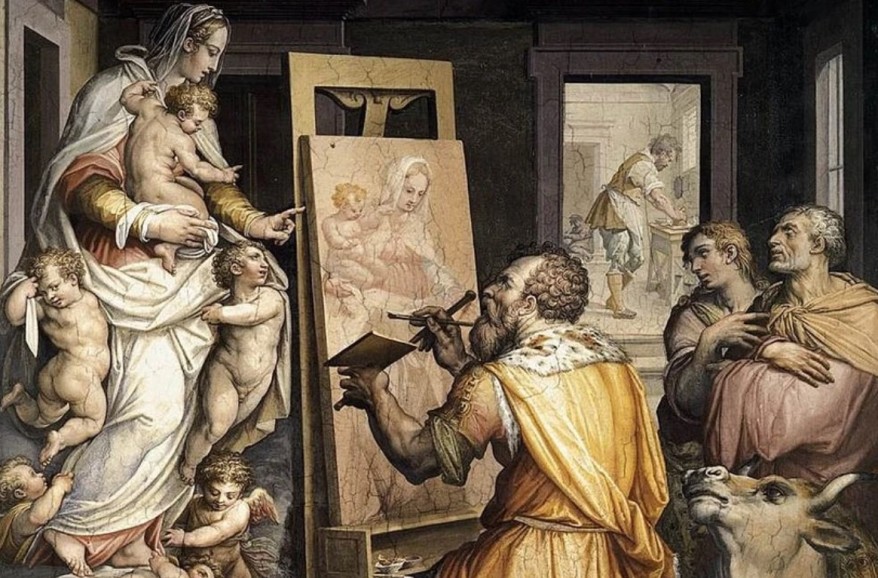
27 giugno 1574: 450 anni fa moriva Giorgio Vasari
🇮🇹Pittore, architetto e scrittore, Giorgio Vasari passava a miglior vita esattamente 450 anni fa, il 27 giugno del 1574. Aveva 62 anni e aveva speso tutta l’esistenza per creare bellezza e scrivere le storie di chi all’arte aveva dedicato l’esistenza… 🇬🇧Painter, architect and writer, Giorgio Vasari passed away exactly 450 years ago, on 27 June…
-
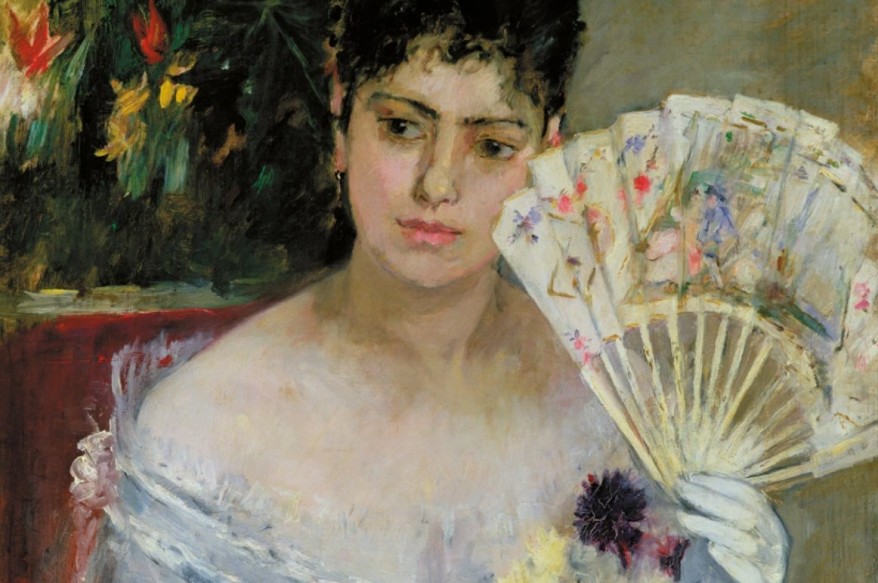
Berthe Morisot: in arrivo la mostra della pittrice impressionista a Torino
🇮🇹Nell’anno in cui si celebra l’Impressionismo, sta per arrivare la mostra “Berthe Morisot. Pittrice impressionista” alla Galleria Civica d’Arte Moderna e Contemporanea di Torino… 🇬🇧In the year in which Impressionism is celebrated, the exhibition “Berthe Morisot. Impressionist painter” at the Civic Gallery of Modern and Contemporary Art in Turin…

